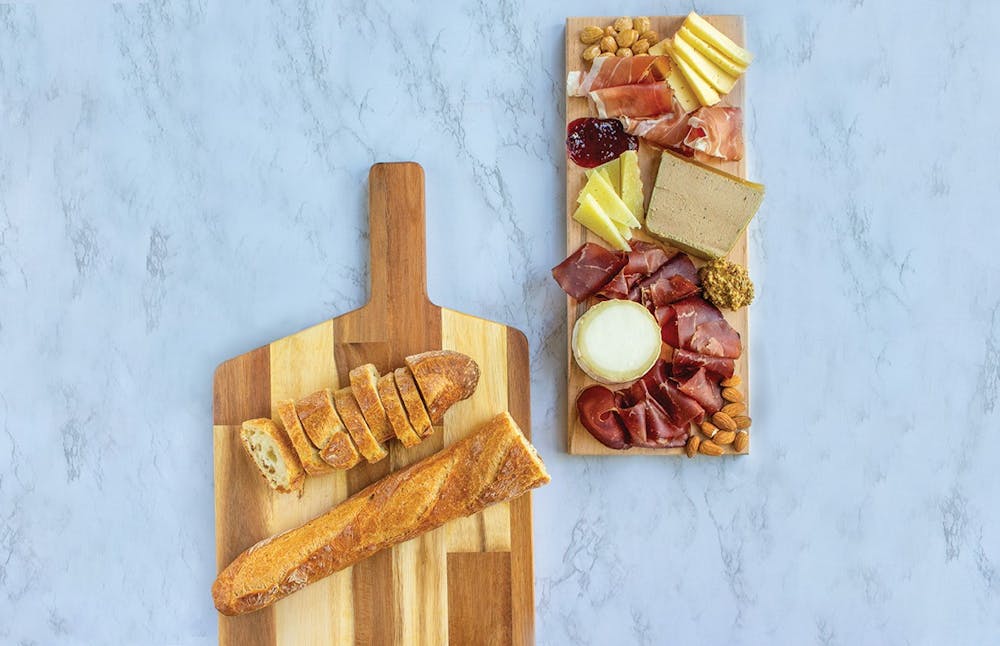Shaar-koo-tr-ee. Charcuterie. You’ve seen it on those trendy restaurant and bistro menus, you’ve seen it on that one chick’s foodie Instagram. But what the hell is it? Charcuterie itself refers to cold, cured meats. A charcuterie board, however, typically contains the meat along with cheese, bread and condiments.
If you want to put together a good charcuterie board, put away everything you know. Unfortunately, this art form is surrounded by misinformation being spread through word of mouth and social media. A good charcuterie board is not measured by the amount of different ingredients on it or how many fruits and other condiments you have, but by the integrity of your meats.
When building a board, my advice is to have at least three different cuts of meat, and plan for four to five ounces of charcuterie per guest. Three gives your guests enough to taste without overwhelming them and will keep your board simple and welcoming to newcomers. When throwing a larger party, I will expand to five, but it’s important to remember your audience: who’s eating this board? Are they charcuterie rookies or masters of the art of consumption? For a group who’s newer, I would stick with fewer, simpler meats like prosciutto or soppressata, but encourage you to get a little zestier with terrines or pâtés for a group who’s more experienced with charcuterie. When picking your meats it’s important that your board tells a story. Remember, this is an art form, people!
Let’s talk terminology: all charcuterie can be broken into two families, crudo, which is raw meat that’s been cured so it’s safe to eat, and cotto, cooked meat. Under those you have your sliced meats, like hams and bacons, and your unsliced hard meats like salami and sausage. Finally, you have your pâtés, terrines and rillettes. Pâtés are spreadable ground meats usually with liver, while terrines are sliceable cuts made of chunkier pieces. Rillettes are shredded meats that can contain seasonings and other ingredients. Once you have a good understanding of each type of ingredient and how they go together, you can start assembling your board.
If you’d like to give the official unofficial Mark Maddaloni Charcuterie Board a shot, here it is:
Charcuterie:
Speck
Mortadella
Bresaola
Duck Pâté
Cheese:
Manchego
Floral cheese
Goat cheese
Accoutrements:
Whole-grain mustard
Preserves
Dried dates
Baguette
Assorted nuts
You have your basics on this board, but all-around delicious and fun options, as well. Your local cheese mongerer (cheese dealer for you pedestrians) will have more specific options depending on each type, but balancing your board with a firm, semi-firm and soft cheese is a safe option. Don’t worry too much about finding a specific type of cheese, there are hundreds of variations, and what you can source depends on your location. Remember, the focus should be on the meats!
I like to keep my accoutrements simple: other than a few spreads, you don’t need to overdo it just for looks. Playing around with different fruits can be fun depending on your meats, but nothing beats a classic pairing. Trust your instincts and your meats, and don’t be afraid to experiment! Please just keep cucumbers off your board.



